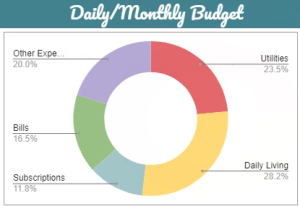Student Travel on Scholarship Budget Tips

Traveling as a student doesn’t have to break the bank, especially when you’re on a scholarship budget. With careful planning and the right destinations, you can explore the world without draining your savings. Here are some of the top destinations that offer incredible experiences, affordability, and unique opportunities for students traveling on a budget.
1. Vietnam
Student life in is amazing. Vietnam is a Southeast Asian gem known for its stunning landscapes, rich history, and affordability. From the bustling streets of Hanoi to the serene beauty of Ha Long Bay, Vietnam offers a mix of cultural and natural attractions. Street food is delicious and budget-friendly, and accommodations like hostels are incredibly cheap, making it a perfect destination for students.
2. Portugal
Student life in Portugal as one of Europe’s most affordable countries offers a blend of history, culture, and stunning coastlines. Lisbon and Porto are vibrant cities with affordable public transport, cheap eats, and free or low-cost attractions like historic sites and museums. Don’t miss the picturesque beaches of the Algarve region for a relaxing getaway.
3. Mexico
Students move to Mexico as it’s a fantastic destination for a student seeking adventure, culture, and affordability. From the ancient ruins of Chichen Itza to the vibrant streets of Mexico City, there’s something for everyone. Accommodation and food are budget-friendly, and the country’s rich cultural heritage makes it an enriching travel experience.
4. Thailand
Students also move to Thailand as it’s a favorite among budget travelers, and for good reason. With its tropical beaches, bustling markets, and affordable street food, it’s a paradise for students. Cities like Bangkok and Chiang Mai offer cheap accommodations, while islands like Phuket and Koh Phi Phi provide stunning scenery without the high price tag.
5. Poland
Poland is an underrated European destination that combines history, culture, and affordability. Cities like Krakow and Warsaw are packed with historic landmarks, museums, and vibrant nightlife. The cost of living is low compared to other European countries, making it ideal for students on a budget.
6. Morocco
Morocco offers a unique blend of African, Arab, and European influences, making it a fascinating destination for students. Explore the bustling souks of Marrakech, the blue streets of Chefchaouen, or the Sahara Desert for an unforgettable adventure. Accommodation and food are inexpensive, especially if you stay in budget-friendly hostels or guesthouses.
7. India
India is a diverse and budget-friendly destination that offers something for every traveler. From the iconic Taj Mahal to the serene backwaters of Kerala, India’s attractions are as varied as they are affordable. Street food, public transport, and budget accommodations make it easy for students to explore this vibrant country without overspending.

8. Hungary
Hungary, particularly its capital Budapest, is a budget-friendly European destination with a rich history and vibrant culture. Enjoy thermal baths, explore historic castles, and stroll along the Danube River—all without breaking the bank. The city’s affordable hostels and cheap eats make it a student favorite.
9. Bolivia
Bolivia is one of South America’s most affordable countries, offering stunning landscapes like the Salar de Uyuni salt flats and the Andes Mountains. The cost of living is low for students and a student who doesn’t want to spend a lot, and accommodations are budget-friendly, making it an ideal destination for adventurous students.
10. Indonesia
Indonesia, particularly Bali, is a dream destination for students on a budget. With its beautiful beaches,
lush rice terraces, and affordable accommodations, Bali offers a perfect mix of relaxation and adventure. Don’t forget to explore other Indonesian islands like Java and Lombok for even more budget-friendly experiences.
Tips for Traveling on a Scholarship Budget
- Plan Ahead: Research and book flights and accommodations in advance to secure the best deals.
- Travel Off-Season: Avoid peak travel times to save on costs and enjoy fewer crowds.
- Use Student Discounts: Many attractions, museums, and transport services offer discounts for students.
- Eat Local: Street food and local markets are not only affordable but also a great way to experience the culture.
- Stay in Hostels: Hostels are budget-friendly and offer opportunities to meet fellow travelers.
Check Out some Scholarship opportunities HERE: https://yellonaija.com/2025/01/04/study-abroad-on-a-budget-scholarships-that-cover-everything/
ALSO HERE: https://sheswanderful.com/scholarships
Traveling on a scholarship budget is entirely possible with the right destinations and planning. These top destinations offer incredible experiences without breaking the bank, making them perfect for students eager to explore the world.




 The urgency of climate change has pushed sustainability to the forefront of global agendas. Governments, corporations, and individuals are taking action to reduce carbon emissions and transition to a low-carbon economy. This has created a surge in demand for green investments, such as renewable energy projects and energy-efficient technologies.
The urgency of climate change has pushed sustainability to the forefront of global agendas. Governments, corporations, and individuals are taking action to reduce carbon emissions and transition to a low-carbon economy. This has created a surge in demand for green investments, such as renewable energy projects and energy-efficient technologies.